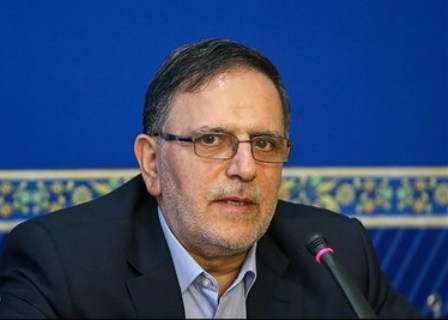Tehran – The lifting of western sanctions as part of the nuclear deal reached between Iran and world powers in July would transform the country.
Speaking on the sidelines of an IMF meeting in Peru, Governor of the Central Bank of Iran Valiollah Seif said, “When the sanctions are lifted, there will be a new condition created for Iran,” Financial Times reported.
Delegations of investors from Asia and Europe have in recent months arrived in Tehran to prepare the ground for deals in various sectors.
Seif said they have come with a “new perspective and outlook” about the Islamic Republic and are “asking many questions about the new conditions”.
Much has been made of interest from international oil companies but other industries are also eying opportunities.
Novo Nordisk, the Danish pharmaceuticals group, plans to build a €70 million manufacturing facility in Iran and international banks have been testing the waters.
The CBI chief is also keen to draw much-needed international investment into roads and other infrastructure.
Part of the appeal, Seif insists, ought to be Iran’s “very good history of being a trade partner” and of paying its bills with a “sense of timeliness and discipline”. There is also Iran’s “unique geographical advantage” and its vast mineral resources.
“I think Iran will be a very favored destination for many international investors,” he added.
Much of Iran’s economic future will hinge on its unimpeded return to global oil markets, once sanctions are lifted and new investment enters the energy sector.
But Seif is conscious that crude prices of below $50 a barrel has created a difficult environment for commodity producing countries.
If being an oil producer was once a guarantee of riches, the slide from above $110 a barrel last year has left many once flush governments exposed.
The lesson, he believes, is that oil producers such as Iran need to diversify for a future independent of oil prices.
“Oil-producing countries should try to forge new identities for themselves and should try to find new positions in the world economy,” he says.
Putting Iran’s economy back on a firmer footing has been one of President Hassan Rouhani’s key tasks since he gained power in 2013.
Seif and the rest of Rouhani’s economic team have won praise from the IMF for restoring growth, taming inflation and starting to tackle some difficult reforms. But putting the Iranian economy back on track is likely to take many years.
After a visit in September, the IMF warned that Iran faced “severe structural challenges” including not only low oil prices but also a banking system that had in effect stopped lending because of high levels of non-performing loans.
The IMF also warned that anticipation of an end to sanctions was hurting Iran’s economy, with consumers and businesses delaying purchases and investment decisions until it were confirmed.
After growing 3% in the Iranian year that ended in March, the economy contracted during the first half of this year and is expected to grow marginally at best over the 12-month period.
Seif, like the IMF, blames the oil shock for much of the slowdown and expects Iran’s economy to grow about 5% next year.
Given the circumstances, he says the Rouhani government should be given credit for restoring some level of confidence in the economy and managing the shocks it has been presented with.
Over time, Seif predicts, foreign investment will boost productivity and bring new life to Iran’s manufacturing sector and its wider economy. But “first [we] need investment,” he adds.
IRNA
R.S

